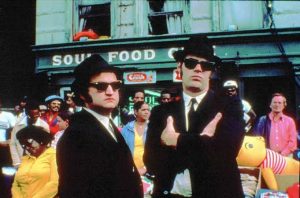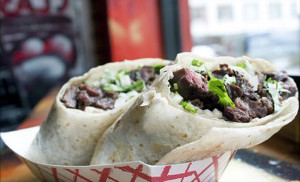The Chicago Tribune reports that inspections are government stethoscopes. They detect leaky roofs, Cobb salads that can tear up our insides, faulty elevators and buildings that are firetraps.
 About those Cobb salads.
About those Cobb salads.
The Chicago Department of Public Health requires “high risk” food establishments, such as restaurants, school and hospital kitchens and day care centers to be inspected twice a year. In 2015, fewer than half of them got two inspections, city Inspector General Joseph Ferguson recently reported. Grocery stores are supposed to get an annual inspection, but nearly 1 in 5 were not visited by sanitarians last year. Bars and convenience stores are supposed to be inspected once every two years, but fewer than 1 in 4 got a visit from inspectors in 2014 and 2015.
The explanation is simple: not enough inspectors. The city has 38 full-time inspectors to handle a workload that the IG says would take 94.
Would you like ranch or Imodium on that Cobb salad?
Foodborne illness affects 48 million people every year in the U.S., according to the Centers for Disease Control and Prevention — hospitalizing at least 128,000, killing 3,000, and making countless others miserable.
Chicago’s food safety inspection rules follow state guidelines, which are based on recommendations from the U.S. Food and Drug Administration. But the city routinely falls short of those standards. For years, the city and state have agreed to “corrective action plans” that allow Chicago to continue to receive local health protection grants from the Illinois Department of Public Health. In 2015, that amounted to $2.5 million.
That raises some questions: Are twice-a-year restaurant inspections necessary to protect people from foodborne illness or not?
Why should consumers have confidence in food safety standards that state health officials consider negotiable?
Does Chicago need more inspectors, or more realistic rules?
If twice-a-year inspections are needed, then the city has an obligation to provide the staffing to conduct them. If they’re not needed, then there are better uses for scarce public dollars. The city needs to figure out which of those things is true, instead of leaving rules on the books and breaking them repeatedly. Taxpayers deserve to know their money is being used wisely, and diners deserve to know their local eateries are following safe food-handling procedures.
It’s not the first time the city has failed to carry out its own inspections regimen. In 2012, the Tribune reported that nearly two-thirds of the city’s elevators had not been inspected the previous year as required. Some of the buildings were downtown, where the city dealt with a backlog by allowing property owners to hire their own inspectors to check elevators. But many building managers didn’t get the inspections done, and the city largely let them off the hook, the Tribune found. Very few of the non-compliant building owners were fined, and the city failed to follow up with its own inspectors, an expense that could have been passed on to the owners.
The fees and fines paid by food service establishments don’t cover the cost of the required inspections — and in any case, that money goes into the city’s corporate fund, which pays for all sorts of programs and services. That money could be dedicated to the Department of Public Health to pay for inspections, though the city would have to find efficiencies in its operating budget to make up for the lost dollars. The city also could charge more for inspections and licenses, or raise the fines for violators, to help cover the costs.
But Ferguson makes an excellent point: The city first needs to determine whether it’s necessary to add 56 inspectors to its payroll. That means working with state health officials to craft an inspections regimen that ensures food safety and is cost-effective, and to codify those standards. The IG’s report recommends consulting with food safety experts — government agencies, NGOs and academic institutions — to come up with a science-based inspection schedule.
By keeping a rule on its books that it doesn’t enforce, the city is not being straight with Chicagoans. Meaningful food safety standards, adequately enforced, will give a hungry public the confidence to chow down.
 In 2015, CDPH deployed a machine learning model to schedule inspections of establishments based on their likelihood to commit critical food code violations.
In 2015, CDPH deployed a machine learning model to schedule inspections of establishments based on their likelihood to commit critical food code violations.







